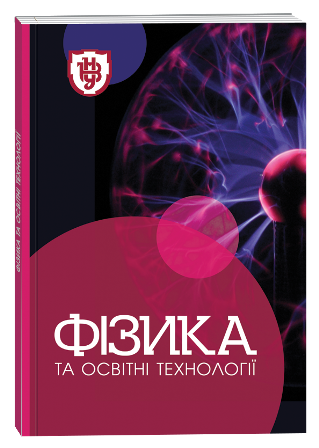OSCILLATIONS OF THE RESONANT ELASTIC PENDULUM
DOI:
https://doi.org/10.32782/pet-2023-1-2Keywords:
elastic pendulum, Lagrange equation, Lisage figures, resonant oscillationsAbstract
The purpose of this work is to investigate the peculiarities of oscillations of an elastic gravitational pendulum, which performs simultaneous coupled oscillations, like a spring and a mathematical pendulum, with a resonant frequency ratio of these oscillations (2:1). Determine the influence of initial conditions on the formation of stable periodic oscillation modes. Investigate the process of energy transfer from one subsystem to another. On the basis of Lagrangian mechanics, neglecting the damping effect, the equations of motion of the pendulum were obtained and the numerical solutions were investigated using computer simulation. It was established that in such a system there is a periodic process of transfer of vibrational energy from one subsystem to another. It is shown that the amount of energy transferred and the period of this process depend on the initial conditions. The following initial conditions were found, under which complete energy transfer occurs, as well as conditions under which there is no influence of one subsystem on another. The novelty of this work lies in the fact that for the first time a map of stable modes of oscillations is constructed, reflecting their evolution depending on the initial conditions of the oscillating system. Based on this oscillation map, it is possible to predict the main parameters of pendulum oscillations under arbitrary initial conditions. Visual and graphic interpretation of the solutions obtained in this work can be used in the study of other physical processes. The computer model is published and can be used in the educational process.
References
Алдошин Г.Т. Яковлев С.П. Механическая модель колебательного спектра углекислого газа. Журнал технической физики. 2016. T.86. № 12. C. 25–32.
Витт А., Горелик Г. Колебания упругого маятника как пример колебаний двух параметрически связанных линейных систем. ЖТФ. 1933. Т. III. Вып. 2–3. С. 294–307.
Olsson M. Why does a mass on a spring sometimes misbehave Am. J. Phys. 1976. 44. 1211-1212.
Anisin B., Davidovic D., Babovic V., Anisin B. On the linear theory of the elastic pendulum Eur. J. Phys. 1993. 14, 132-135.
Christensen J. An improved calculation of the mass for the resonant spring pendulum Am J. Phys. 2004. 72, 818.
Lai H. M. On recurrence phenomenon of a resonant spring pendulum Am. J. Phys. 1984. 52, 219-223.
Carretero-Gonzalez R., Nunez-Yepez N., Salas-Brito A. Regular and chaotic behavior in an extensible pendulum Eur. J. Phys. 1994. 15, 139-148.
Sousa M. C., Marcus F. A., Caldas I. L., Viana R. L. Energy distribution in intrinsically coupled systems: The spring pendulum paradigm Physica A. 2018. 509. 1110
Cross R. Experimental investigation of an elastic pendulum Eur. J. Phys. 2017. 38, 065004 (9pp).
Holovatsky V., Holovatska Y. Oscillations of an elastic pendulum. 2019. URL: http://demonstrations.wolfram.com/OscillationsOfAnElasticPendulum/








